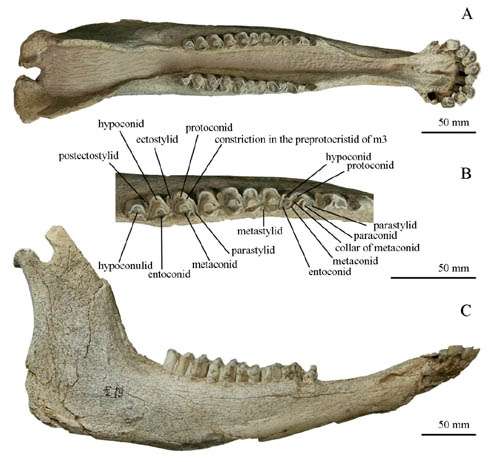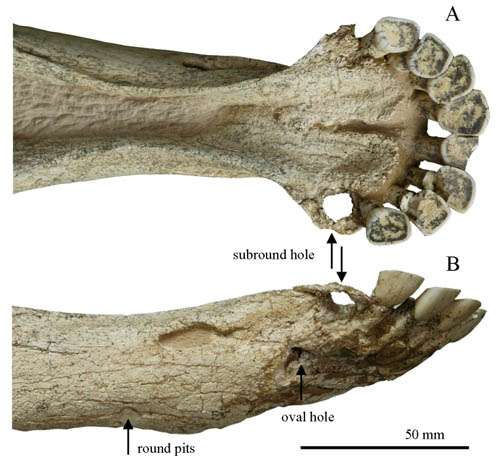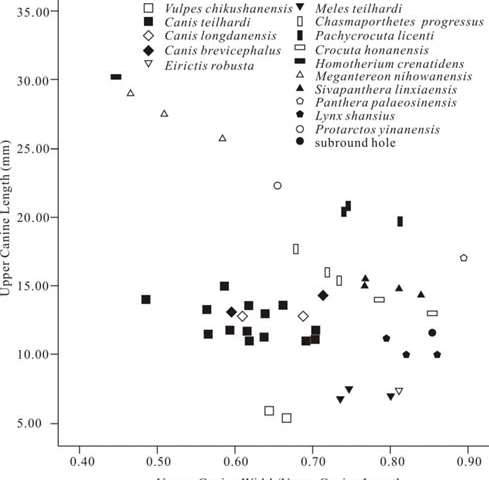

The new specimen supplements some characters of this bovid species. It has a long and thin mandible, and a long mandibular diastema. The premolar row is short. The mandibular body forms an obtuse angle of about 120° with the mandibular ramus, while the angle of the mandible is nearly 90°. Leptobos brevicornis may differ from Leptobos crassus in having a more developed hypoflexid in the lower fourth premolar based on the observations between the materials from Renzi Cave in Anhui Province and the revised materials from Gongwangling in Shaanxi Province.
A hole that appears to represent a wound pierces the anterior part of the mandible, located close to the right canine. The hole is subround-shaped from occlusal view. Along the labial rim of the hole, loss of bony matter and cracks on the bone slice appear to be evident. Another hole is situated posteroventrally to the subround hole, which is oval-shaped. Two additional round pits are located in the ventral border of the mandible, below the posterior margin of the mental foramen. It is barely to have opportunities to predict or study mammals' predatory activities through fossil records, and detailed studies can only be seen in Chilotherium wimani bitten by Dinocrocuta gigantea and Iberotherim rexmanueli zbyszewskii bitten by Amphicyon giganteus.
Bovids use horns as intraspecific weapons, and living bovids with horns shaped like those of Leptobos normally use them for wresting and head-on ramming in the context of fighting, obviously not the wound maker. The curvature of the interior lingual wall of the subround hole indicates that a curved object is the wound maker, and therefore the subround hole may be interpreted as the result of stabbing by the conical canine, which would imply that one carnivore was the attacker on Leptobos. There are 17 species of carnivores, however, only 11 species of herbivores, in the Early Pleistocene mammalian fauna from Longdan. Compared with the ratio of between the upper canines of known carnivores from Longdan and the subround hole, four carnivores meet the condition of the attacker, which are Lynx shansius, Panthera palaeosinensis, Sivapanthera linxiaensis and Crocuta honanensis.

Figure 2 Wounds in the mandible of Leptobos brevicornis. Credit: LI Yiku


86-10-68597521 (day)
86-10-68597289 (night)

86-10-68511095 (day)
86-10-68512458 (night)

cas_en@cas.cn

52 Sanlihe Rd., Xicheng District,
Beijing, China (100864)

